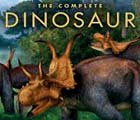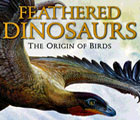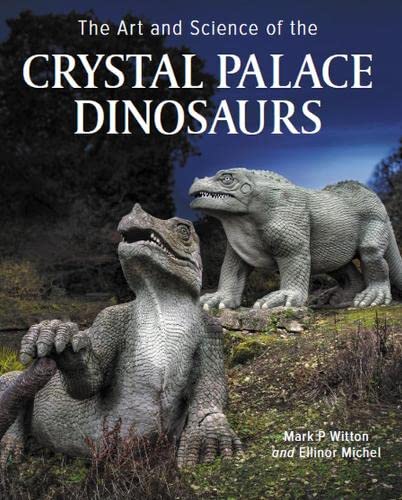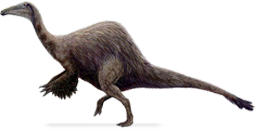Pronunciation: DIE-no-KIRE-ruh-day
Authors: Osmólska and Roniewicz
Year: 1970
Meaning: Terrible hand family (see etymology)
Locomotion: Bipedal (2 legs)
Synonyms: Garudimimidae (Barsbold, 1981)
Harpymimidae (Barsbold and Perle, 1984)
Authors: Osmólska and Roniewicz
Year: 1970
Meaning: Terrible hand family (see etymology)
Locomotion: Bipedal (2 legs)
Synonyms: Garudimimidae (Barsbold, 1981)
Harpymimidae (Barsbold and Perle, 1984)
[Lee et al. 2014]Definition
Deinocheirus mirificus and all taxa sharing a more recent common ancestor with it than Ornithomimus velox.
About
Coming soon...
Etymology
Deinocheiridae is derived from the Greek "deinos" (terrible), "cheir" (hand) and "-idae" (family).
Relationships
References
• Osmólska H and Roniewicz E (1970) "Deinocheiridae, a New Family of Theropod Dinosaurs". Palaeontologica Polonica: 5-19.
• Lee Y-N, Barsbold R, Currie PJ, Kobayashi Y, Lee H-J, Godefroit P, Escuillié F and Chinzorig T (2014) "Resolving the long-standing enigmas of a giant ornithomimosaur Deinocheirus mirificus". Nature, 515(7526): 1-4. DOI: 10.1038/nature13874.
• Serrano-Brañas CI, Espinosa-Chávez B, Maccracken SA, Gutiérrez-Blando C, de León-Dávila C and Ventura JF (2020) "Paraxenisaurus normalensis, a large deinocheirid ornithomimosaur from the Cerro del Pueblo Formation (Upper Cretaceous), Coahuila, Mexico". Journal of South American Earth Sciences, 101. DOI: 10.1016/j.jsames.2020.102610.














